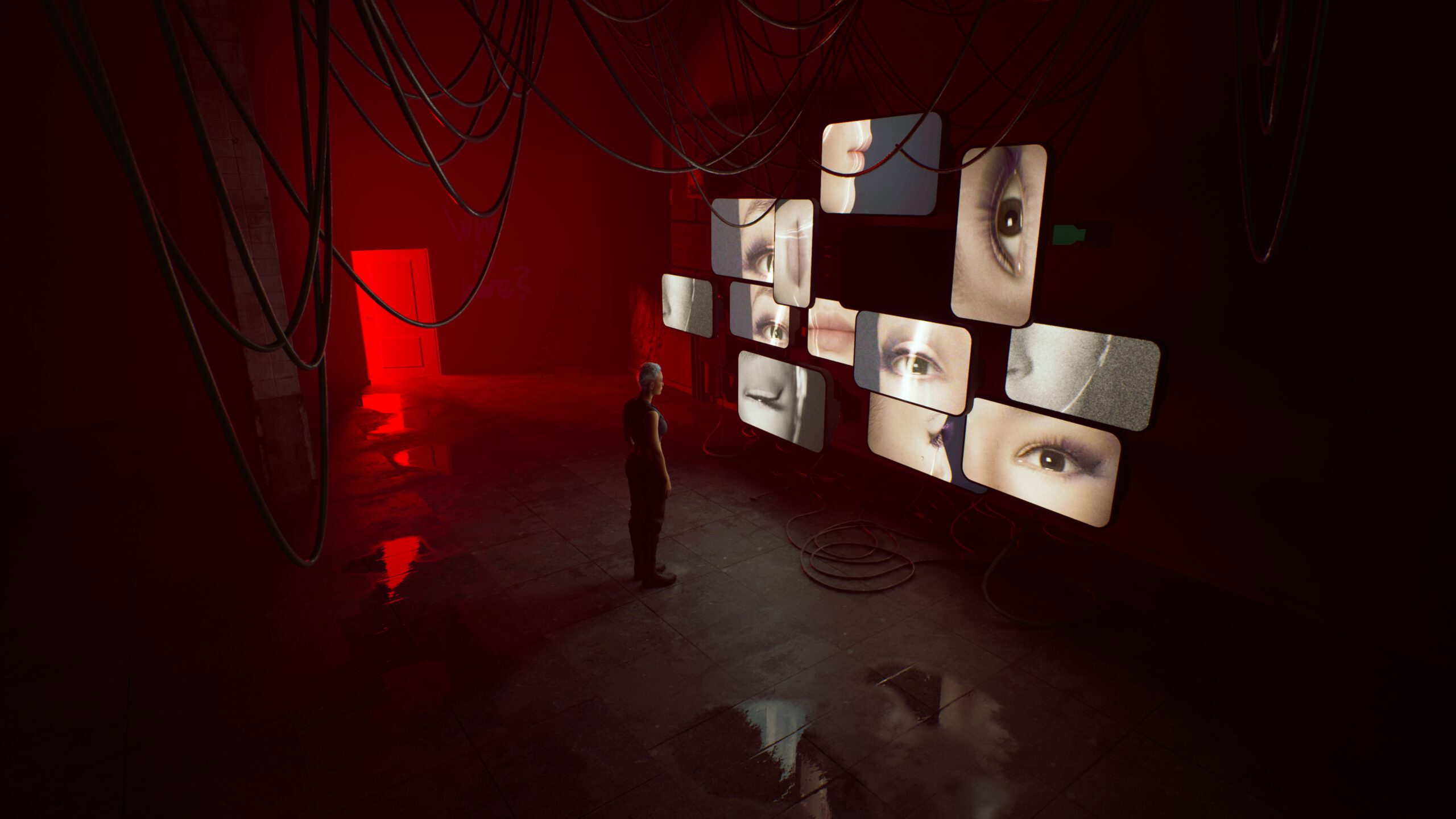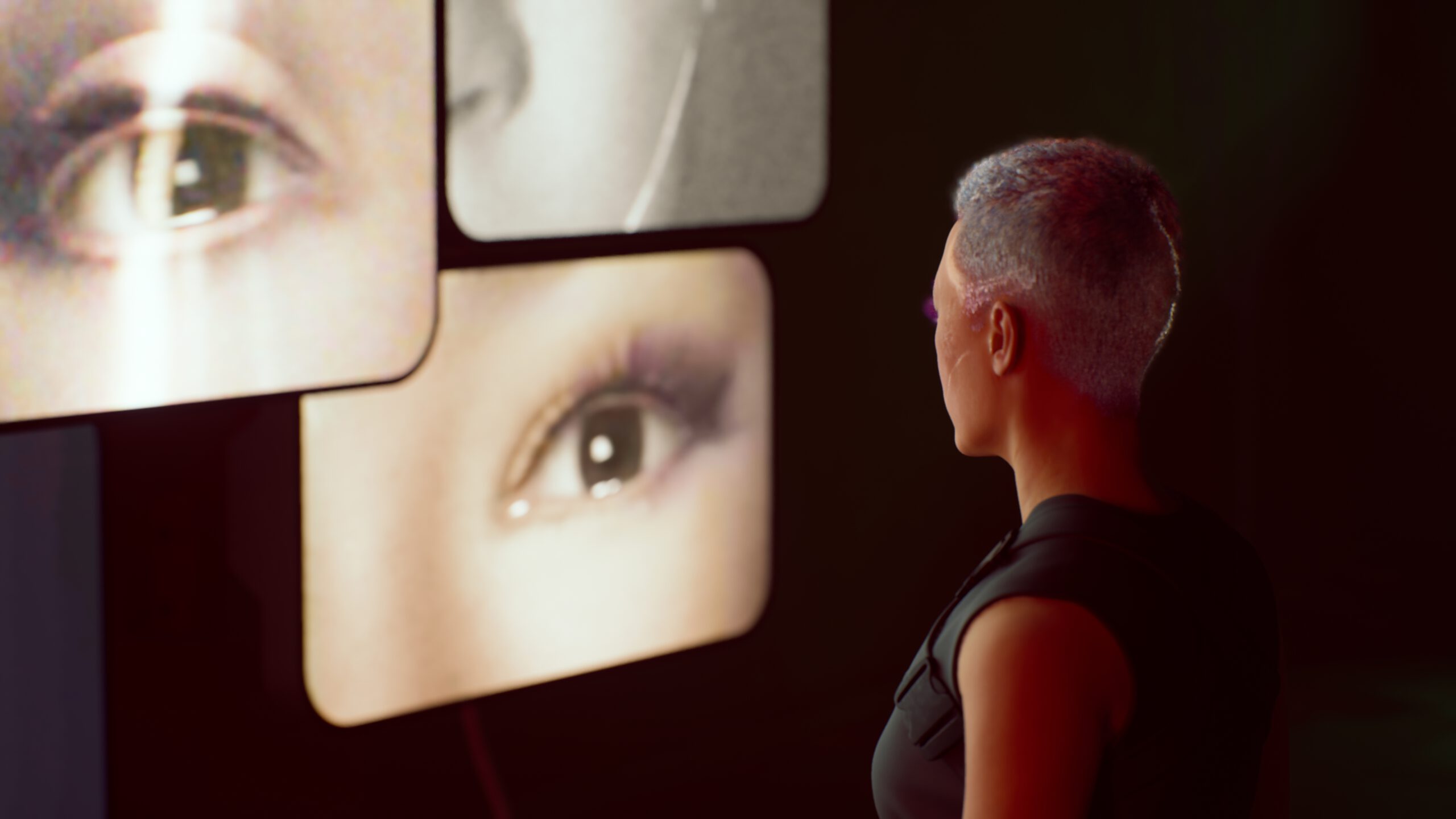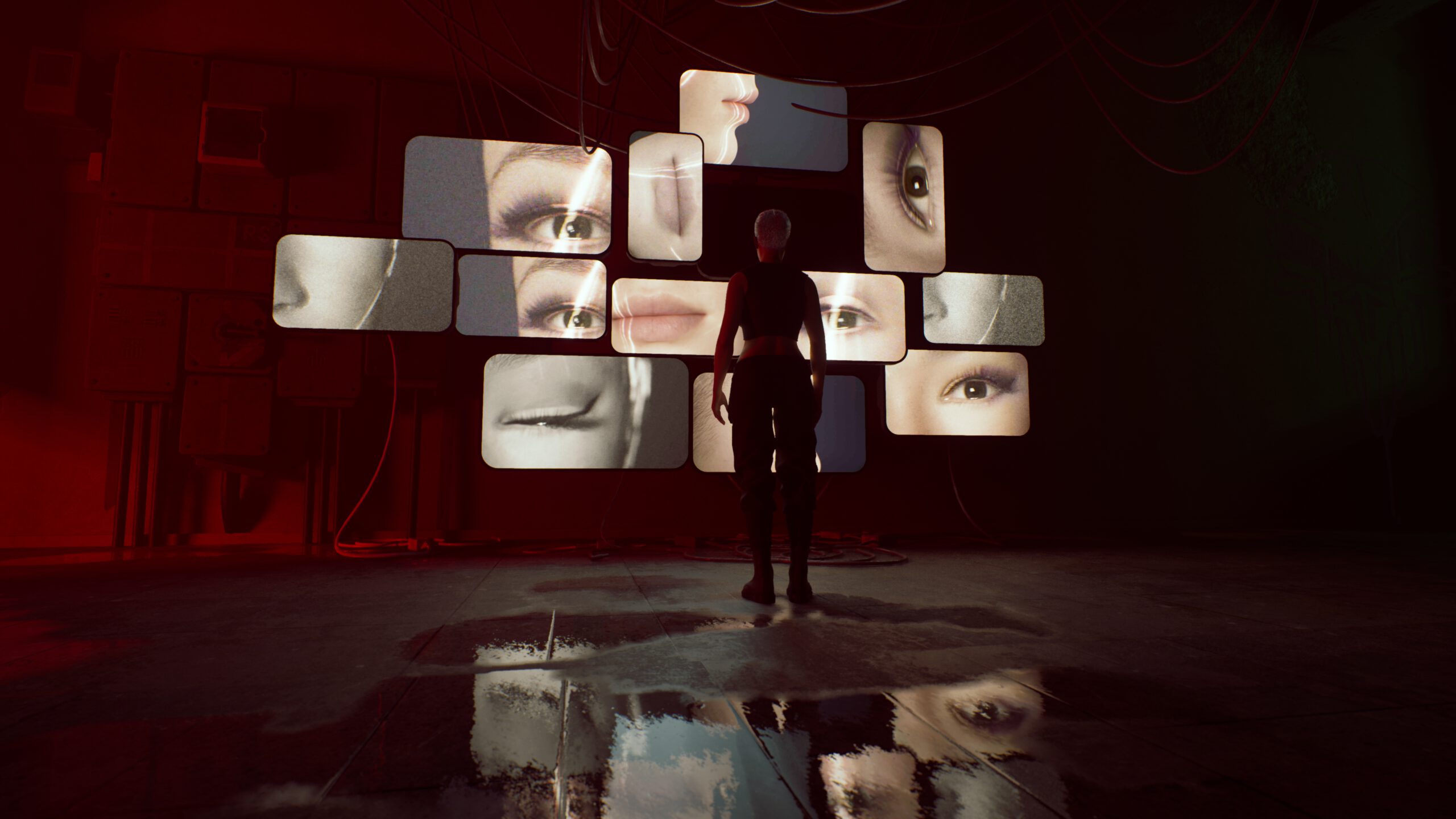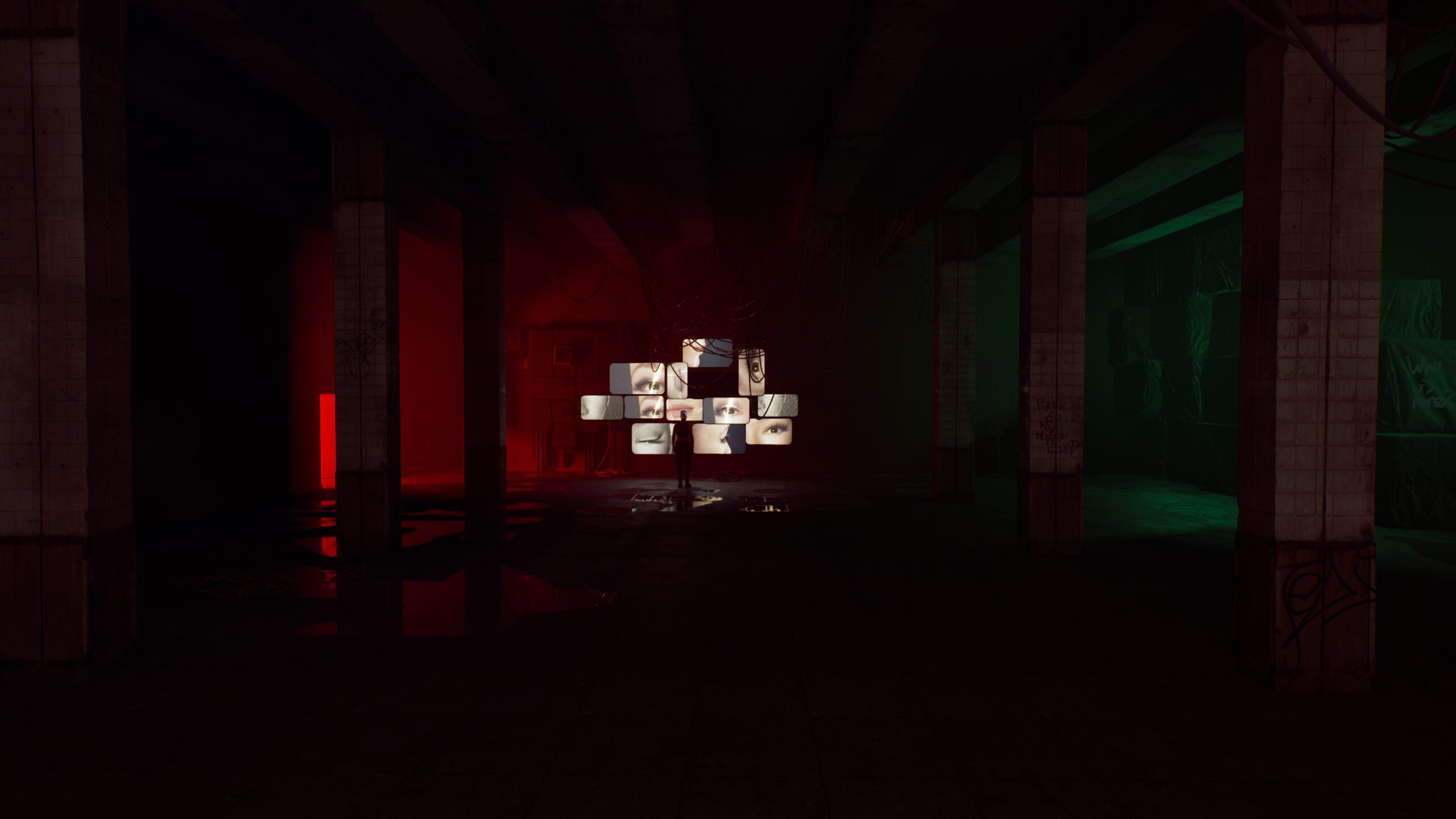Ray-traced
The screens, feeling like I’m drowning in fragments of myself—an eye blinking, lips parted in surprise, a single drop of sweat tracing down my neck. They’re all… me. Or are they really me?
I try to step back, but my feet feel rooted to the ground, as if the floor has reached up to claim me. I can’t shake the sense that I’m not alone here, that somewhere in the shadows, someone is watching, gauging my reaction.
Who else is here?
The walls feel heavy with old lives, secrets scrubbed and painted over but not erased. Red light leaks from a doorway, pulsing softly, like the last breath of something ancient. Something ends there…
The voice crackles through the silence, low and clinical. “Raya! there’s no need to be alarmed. This is… for your understanding.” There’s something almost amused in its tone, like I’m the punchline to a joke I’ll never fully get.
“Who are you?” I whisper, barely recognizing the tremor in my own voice. I know the answer is more complex than any name. Somewhere in my mind, the memories click—faces in the crowd at every school I’ve attended, “coincidental” friendships, opportunities I never questioned. Every choice, each path I thought was my own, was theirs. Designed. I have been watched-or better described as “traced” my whole life…














In a world increasingly governed by algorithms, surveillance, and constant online manipulation, Ray-Traced is my attempt to examine what it means to be “”rendered” and observed, not as a whole person but as a collection of data points—a series of decisions tracked,traced, evaluated, and ultimately reprogrammed. Raya’s story in Ray-Traced is a reflection of the pervasive, nearly invisible, and yet deeply consequential, mechanisms in our own lives that dictate what we see, want, and value.
Today, we exist within a digital landscape where our interactions are not reflections of who we are; they are tools that mold who we become. Tailored to spark desire, reinforce beliefs, or cultivate an identity—mirrors Raya’s fragmented perception of self on the wall of screens. Her life, meticulously designed and surveilled to achieve a purpose not her own, serves as a metaphor ,like many other Sci-Fi stories that live as caricatures of reality to critically observe an aspect of it.
In Ray-Traced, I wanted to explore a version of this reality, where a life meticulously observed is a life no longer free, where the protagonist must confront the terrifying truth of having been constructed for a purpose she never chose. Elise’s journey is a reminder that unchecked surveillance and manipulation through technology can erode our autonomy, reducing us to a role, a target, a predictable set of needs. Her horror is one we all face—perhaps subtly—each time our desires feel less like choices and more like programmed responses.